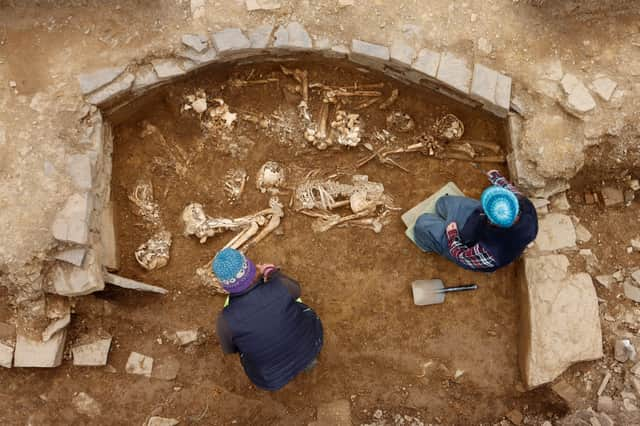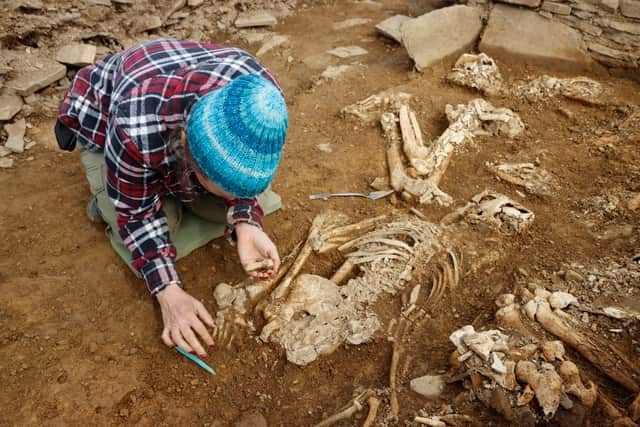Skeletons found in rare 5,000-year-old Orkney tomb considered 'the pinnacle of Neolithic engineering'


Excavation work has led to archaeologists in Scotland discovering the ruins of an 'incredibly rare' 5,000-year-old tomb. Despite the tomb largely being destroyed and left to ruin more than 100 years ago, the researchers were still able to find the remains of at least 14 men, women and children.
The team from National Museums Scotland and Cardiff University excavated the site at Holm, East Mainland, Orkney and were able to reveal traces of a substantial cairn measuring over 15m in diameter within which a stone structure could be accessed by a 7m long passage.
Advertisement
Hide AdAdvertisement
Hide AdThe surviving drystone walls revealed a large sub-rectangular stone chamber lay at the centre of the cairn. This was surrounded by six smaller side cells that once had corbelled stone roofs.
These features allow the tomb to be classed as a ‘Maes Howe-type’ passage grave which is considered the pinnacle of Neolithic engineering in northern Britain. Only twelve tombs of this type are known in Orkney, including Maes Howe, Cuween and Quoyness.


Dr Hugo Anderson-Whymark from National Museums Scotland said: "Orkney is exceptionally rich in archaeology, but we never expected to find a tomb of this size in a such a small-scale excavation. It’s incredible to think this once impressive monument was nearly lost without record, but fortunately, just enough stonework has survived for us to be able to understand the size, form and construction of this tomb." Most of these tombs survive as upstanding monuments in Orkney, but the Holm tomb was buried beneath a pasture field as it was largely destroyed in the late 18th or early 19th century to supply building stone for a nearby farmhouse.
Further digging in the ruins by the farmer’s son in 1896 revealed traces of walling and located a stone macehead and ball, and eight skeletons. These discoveries were reported in The Orcadian by the local antiquary James Walls Cursiter, who speculated that the site was a ruined tomb.
Advertisement
Hide AdAdvertisement
Hide AdThe rare and unusual nature of the 1896 discoveries prompted the current search for the precise findspot so that the character of the earlier discoveries could be clarified.
Professor Vicki Cummings from Cardiff University added: "The preservation of so many human remains in one part of the monument is amazing, especially since the stone has been mostly robbed for building material. It is incredibly rare to find these tomb deposits, even in well-preserved chambered tombs and these remains will enable new insights into all aspects of these peoples’ lives." Despite modern disturbances, fourteen articulated skeletons of men, women and children and further disarticulated remains were located in one stone side cell.
Further human remains and artefacts, including pottery, stone tools and a bone pin, were found in the Victorian backfill of the tomb by students from the University of Central Lancashire and local volunteers.
Comment Guidelines
National World encourages reader discussion on our stories. User feedback, insights and back-and-forth exchanges add a rich layer of context to reporting. Please review our Community Guidelines before commenting.
